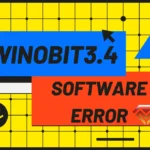What Is Cid10g43 and Why Should You Care?
In today’s fast-evolving world of digital identifiers and system codes, Cid10g43 stands out as a critical reference point for professionals and developers alike. While it may appear as just a string of characters at first glance, Cid10g43 represents a structured identifier used in specific technical environments to classify, track, or authenticate components within a system. Whether you’re working with data mapping, system integration, or digital asset management, understanding Cid10g43 can significantly improve accuracy and efficiency.
How Cid10g43 Works in System Architecture
At its core, Cid10g43 functions as a unique node or category tag within a hierarchical classification framework. It’s often embedded in databases, configuration files, or API responses to denote a particular segment, error type, or data class. For instance, in a large-scale enterprise application, Cid10g43 might represent a specific module responsible for user authentication or data encryption. This level of specificity helps engineers isolate issues, streamline debugging, and maintain cleaner codebases.
Unlike generic identifiers, Cid10g43 follows a strict naming convention that ensures consistency across platforms. This makes it invaluable in environments where interoperability is key. Teams using Cid10g43 benefit from reduced ambiguity and faster cross-team communication, especially during audits or system upgrades.
Common Use Cases for Cid10g43
One of the most frequent applications of Cid10g43 is in error logging and diagnostics. When a system throws an anomaly, Cid10g43 may appear in the log to indicate the source—such as a failed data sync or a timeout in a microservice call. This allows developers to quickly trace the root cause without sifting through unrelated entries.
Another powerful use case is in data categorization. In content management systems or digital libraries, Cid10g43 can label specific content types, access tiers, or compliance statuses. For example, a document tagged with Cid10g43 might be automatically flagged for restricted access or regulatory review, improving governance and security.
Why Cid10g43 Matters for Scalability and Maintenance
As systems grow in complexity, the ability to maintain clarity in labeling becomes paramount. Cid10g43 supports this by offering a standardized way to reference components. It reduces the risk of miscommunication between departments and ensures that documentation remains accurate over time. Teams that adopt Cid10g43 early in development cycles often report fewer integration bugs and faster deployment times.
Moreover, Cid10g43 enhances audit readiness. During compliance checks, having clearly labeled identifiers like Cid10g43 allows auditors to verify system behavior with minimal effort. This is especially useful in industries like healthcare, finance, and logistics, where traceability is non-negotiable.
Best Practices When Using Cid10g43
To get the most out of Cid10g43, teams should document its meaning and scope clearly. Avoid overloading the identifier with multiple roles—keep its purpose singular and well-defined. Regularly review its usage across projects to ensure consistency. Additionally, integrate Cid10g43 into training materials so new team members can adopt it seamlessly.
Conclusion: Mastering Cid10g43 for Better System Control
While Cid10g43 may seem like a small piece of a much larger puzzle, its impact is far-reaching. From improving diagnostic speed to enabling scalable data management, Cid10g43 is more than just a code—it’s a tool for precision, clarity, and control. As digital ecosystems continue to expand, identifiers like Cid10g43 will remain essential for maintaining order and efficiency. By understanding and implementing Cid10g43 correctly, organizations position themselves for long-term technical success.












